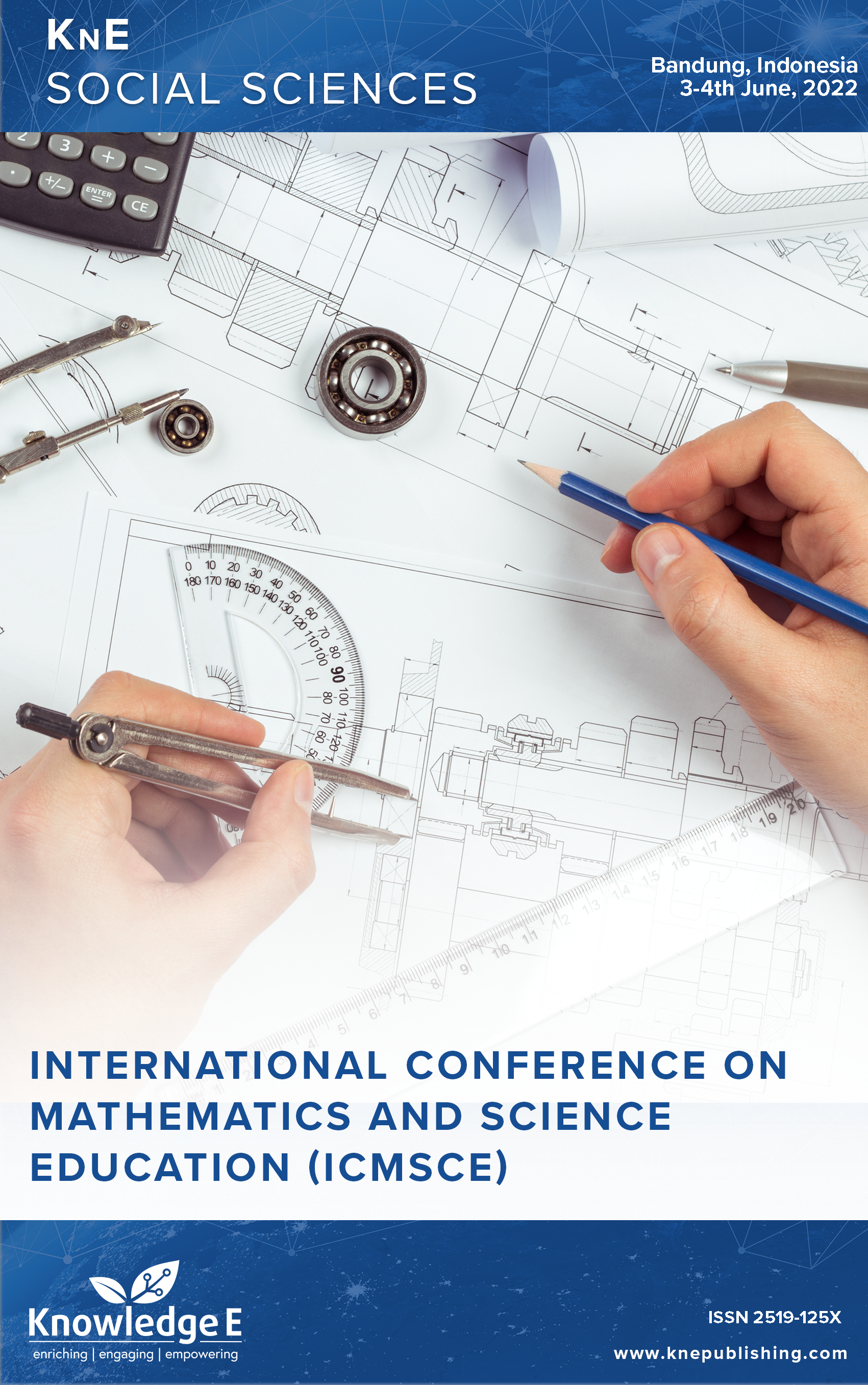Hypothetical Learning Trajectory Through the Problem-Based Learning in Junior High School Students
DOI:
https://doi.org/10.18502/kss.v9i13.16037Abstract
The purpose of this study was to determine the hypothetical learning trajectory through a problem-based learning model to class VIII junior high school students. Learning mathematics requires a meaningful process and that process cannot be obtained in a relatively short time because it requires good preparation in conveying mathematical concepts to students. The preparation is designed according to the characteristics of students so that the delivery of the material goes well as expected. The preparation referred to in this case is to design a good hypothetical learning trajectory (HLT) according to the needs and subject matter. Hypothetical learning trajectory (HLT) is a temporary hypothesis about students’ activities in the learning process on certain materials. This study uses a design research method with stages referring to Plomp (2013) which consists of three phases including (1) preliminary research; (2) development or prototyping phase; and (3) assessment phase. However, in this research, it is only in the first phase, namely preliminary research. In designing the HLT, it is based on a problem-based learning model which has five stages in each process. The instrument used in this study was a teacher and student interview sheet. The results obtained are the HLT design on linear equation material that is adjusted to the stages in the problem-based learning model. The results obtained from this study can be used as an initial reference for mathematics teachers in designing learning material for linear equations that are in accordance with the real context of students.
Keywords: Learning Trajectory, Problem-Based Learning, Junior High Students
References
Rosmala A. Model-model pembelajaran matematika. Bumi Aksara; 2021.
Sukma E, Ramadhan S, Indriyani V. “Integration of environmental education in elementary schools.,” In: Journal of Physics: Conference Series. pp. 12136. IOP Publishing (2020). https://doi.org/10.1088/1742-6596/1481/1/012136. DOI: https://doi.org/10.1088/1742-6596/1481/1/012136
Kara M, Simon MA, Placa N. An empirically-based trajectory for fostering abstraction of equivalent-fraction concepts: A study of the learning through activity research program. J Math Behav. 2018;52:134–50. DOI: https://doi.org/10.1016/j.jmathb.2018.03.008
Khoirudin K, Rizkianto I. Pengembangan perangkat pembelajaran problem based learning dan learning trajectory yang berorientasi pada kemampuan penalaran matematis siswa. Mosharafa: Jurnal Pendidikan Matematika. 2018;7(2):207–18. DOI: https://doi.org/10.31980/mosharafa.v7i2.34
Lede YK, Kii YI. “Lintasan belajar untuk membelajarkan materi membuat Model Matematika Sistem Persamaan Linear Dua Variabel (SPLDV) bagi Siswa Kelas VIII.,” In: Prosiding Seminar Nasional Pendidikan Matematika Etnomatnesia (2018).
Sari N. Peningkatan pemahaman konsep matematis melalui pembelajaran kontekstual pada siswa sekolah menengah pertama. Jurnal Mathematic Paedagogic. 2019;3(2):144–50. DOI: https://doi.org/10.36294/jmp.v3i2.422
Plomp T. “Educational design research: An introduction.,” Educational design research. pp. 11–50, 2013. DOI: https://doi.org/10.1080/09523987.2013.843832
Rezky R. “Hypothetical learning trajectory (HLT) dalam perspektif psikologi belajar matematika.,” Ekspose: Jurnal Penelitian Hukum dan Pendidikan. vol. 18, no. 1, pp. 762–769, 2019. https://doi.org/10.30863/ekspose.v18i1.364. DOI: https://doi.org/10.30863/ekspose.v18i1.364
Simon MA, Tzur R. Explicating the role of mathematical tasks in conceptual learning: An elaboration of the hypothetical learning trajectory. Hypothetical learning trajectories. Routledge; 2012. pp. 91–104. DOI: https://doi.org/10.1207/s15327833mtl0602_2
Simon MA. Reconstructing mathematics pedagogy from a constructivist perspective. J Res Math Educ. 1995;26(2):114–45. DOI: https://doi.org/10.5951/jresematheduc.26.2.0114
R.I. Arends, “Learning to teach (Belajar untuk mengajar) pustaka Pelajar, cetakan ketujuh,” (2008).

